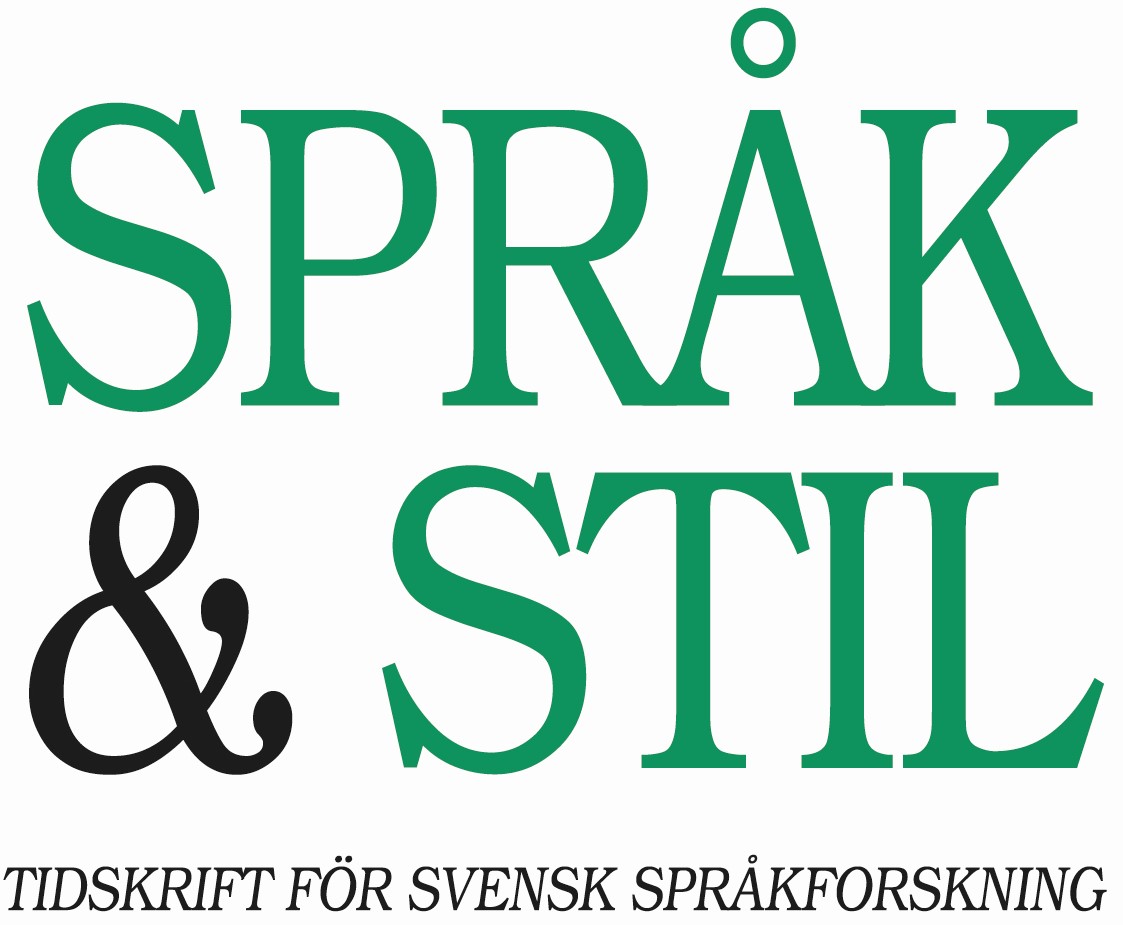Pivåyttranden och pivoider i svenskan
DOI:
https://doi.org/10.33063/diva-472198Nyckelord:
pivot constructions, apokoinou, syntax in conversation, Swedish, verb secondAbstract
Engdahl, Elisabet, elisabet.engdahl@svenska.gu.se, Professor, Department of Swedish, University of Gothenburg; Per Linell, per.linell@gu.se, Professor, Department of Education, Communication and Learning, University of Gothenburg; Niklas Norén, niklas.noren@edu.uu.se, Associate Professor, Department of Education, Uppsala University: “Pivot utterances and ‘pivoids’ in Swedish”. Språk och stil NF 31, 2021, pp. 5−38.
This article explores the syntactic properties of pivot utterances in Swedish, i.e. utterances in which one constituent is shared between two clauses. Previous research has primarily investigated the communicative functions of pivot utterances, leaving grammar aside. Pivot utterances are produced incrementally as three units, pre-pivot – pivot – post-pivot. These units are syntactically and prosodically integrated into one another in such a way that the pre-pivot and the pivot form the first clause, while the pivot and the post-pivot form the second clause. In addition to the syntactic aspects, prosodic and interactional aspects of utterance production are taken into account. The analysis of more than 200 spontaneously produced utterances shows that the construction makes use of the fact that Swedish is a verb second language with an open prefield. The pivot is the final constituent of the first clause, which is then reconstructed as the prefield of the second clause. In most cases, the pivot’s syntactic function is the same in both clauses (e.g. adverbial or object), but the pivot can also be reconstructed as subject in the second clause. The analysis also identifies several types of pivoids, i.e. utterances that resemble pivot utterances but where the final unit does not meet the criteria for being analysed as a post-pivot. Among these are the dialogic grammatical constructions topic drop and nexus add-ons.
Downloads
Publicerad
Nummer
Sektion
Licens
Copyright (c) 2021 Författarna

Det här verket är licensierat under en Creative Commons Erkännande 4.0 Internationell-licens.
Författare som bidrar till Språk & stil har givit sitt medgivande att publicera sina artiklar under en Creative Commons-licens (Creative Commons CC-BY 4.0), vilket ger tredje part rätt att kopiera och återdistribuera materialet i vilket medium eller format som helst. Det ger också tredje part rätt att bearbeta, förändra och vidareutveckla materialet för vilket syfte som helst, inklusive kommersiellt, på villkor att tydligt erkännande ges till verkets upphovsperson, att en länk till licensen tillhandahålls och att det tydliggörs om ändringar av verket har gjorts. Detta ska göras på skäligt vis, och får ej förespegla att licensgivaren godkänner tredje part eller vederbörandes användning av verket. Författaren/författarna behåller copyright till verket.


